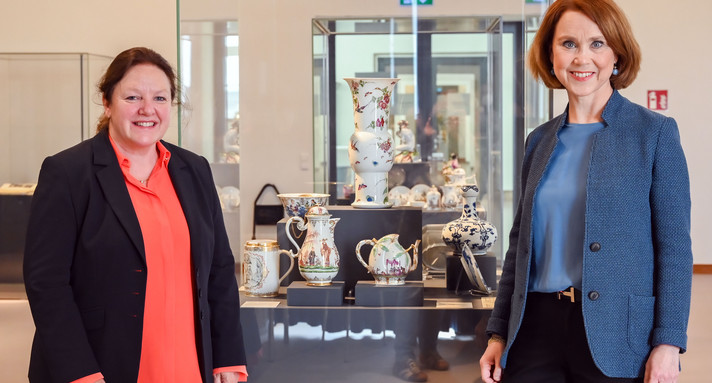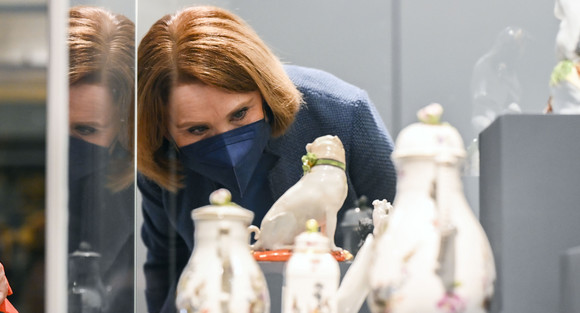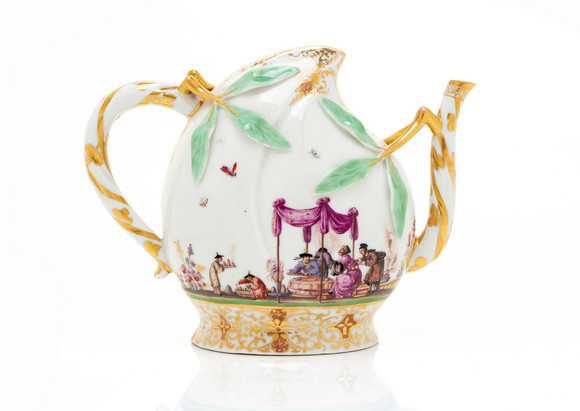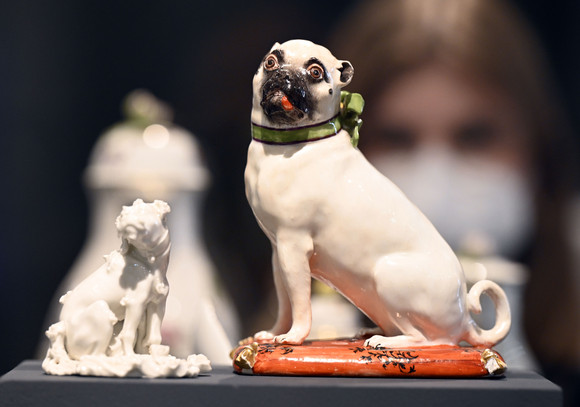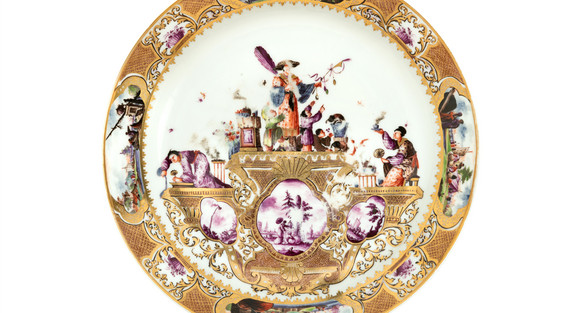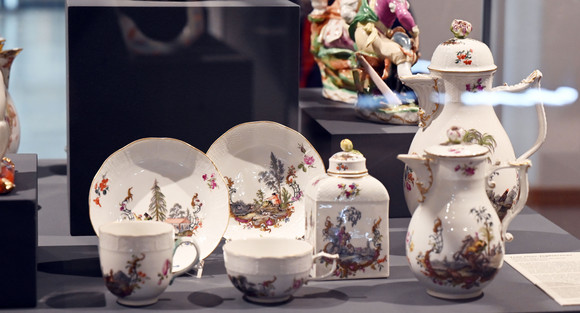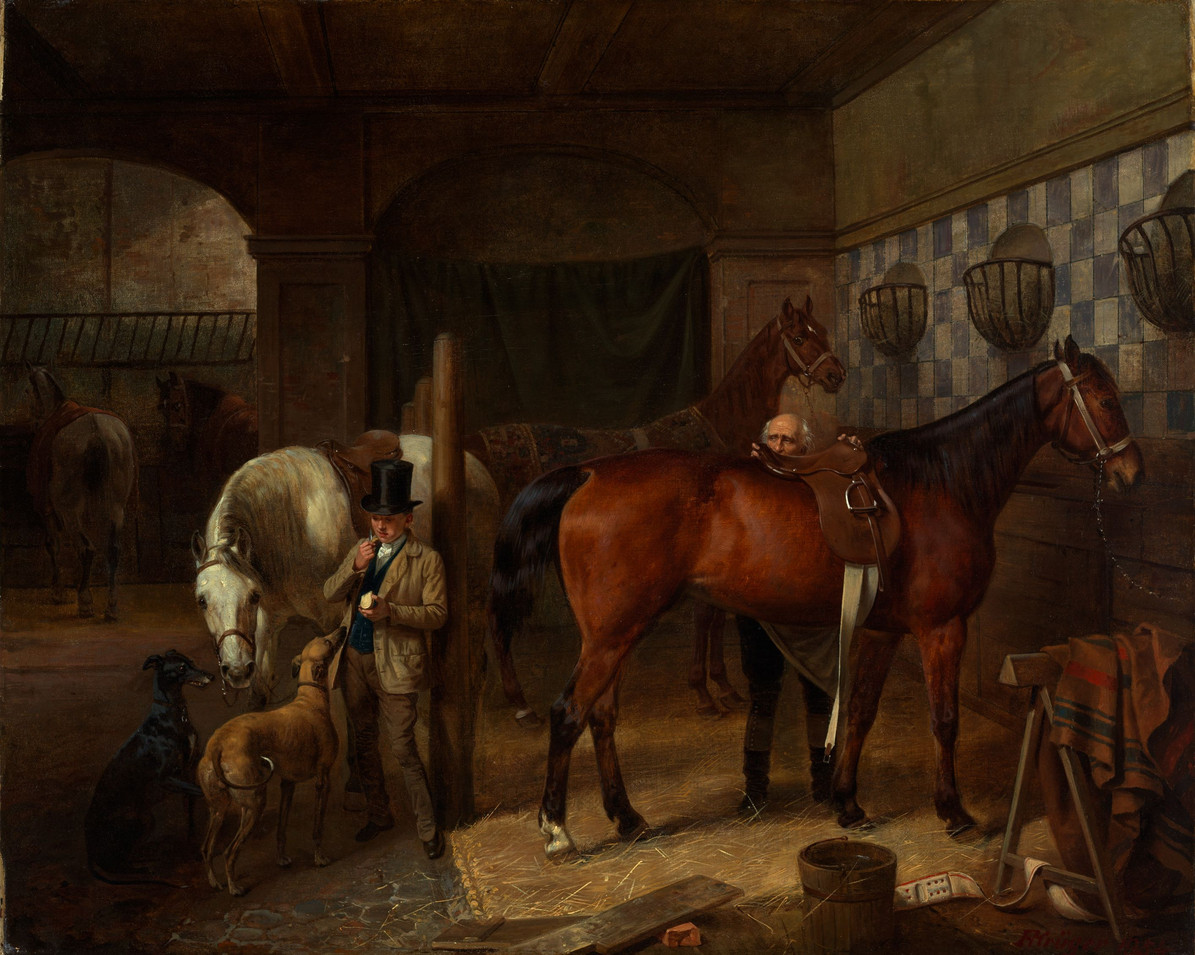Gallinek Collection
In 2020, the Gallinek Collection was restituted from the holdings of the Baden State Museum. The collection of the Jewish art collector Dr. Ernst Gallinek, who was born in Breslau in 1865 and died in Baden-Baden in 1940, consists of 466 historical porcelain objects, portrait miniatures and tapestries.
Already in 2008, the collection was identified as Nazi-looted property and entered into the "Lost Art" database. After clarification of the inheritance situation, Baden-Württemberg was able to buy the collection in 2021 with the support of the "Kulturstiftung der Länder".
Restitution of the painting "Siblings"
The painting "Siblings" (“Geschwister”) by Erich Heckel was still owned by the Jewish collector Max Fischer in 1934. It then returned to the property of the painter, Erich Heckel, in a way that is inexplicable today. Heckel gave the painting to the Kunsthalle Karlsruhe in 1967. Max Fischer was forced to emigrate to the USA in 1935 due to being persecuted by the Nazis.
Due to the provenance gap, which could not be closed despite intensive research, the Ministry of Science, Research and Arts and the Kunsthalle Karlsruhe decided in 2019, in agreement with Max Fischer's heirs, to appeal to the "Advisory Commission in connection with the restitution of cultural goods seized as a result of Nazi persecution, in particular from Jewish ownership" in this restitution matter. This commission recommended the restitution of the painting in 2021. Accordingly, the painting was restituted to Max Fischer's heirs.
Provenance research in Baden-Württemberg
Clarifying the origin and history of a cultural good, the so-called provenance, is an important prerequisite for the restitution of Nazi-looted property. Provenance research is a complex, labor-intensive and long-term task. Nazi-related expropriations were not always documented, and many documents were lost or destroyed during the Second World War.
Permanent positions for provenance research have therefore been set up at the Staatsgalerie Stuttgart, the Staatliche Kunsthalle Karlsruhe, the Badisches Landesmuseum in Karlsruhe, the Landesmuseum Württemberg and the Linden-Museum in Stuttgart. As a result of this research work, a large number of provenances have already been conclusively clarified and made the basis for appropriate restitution decisions.

